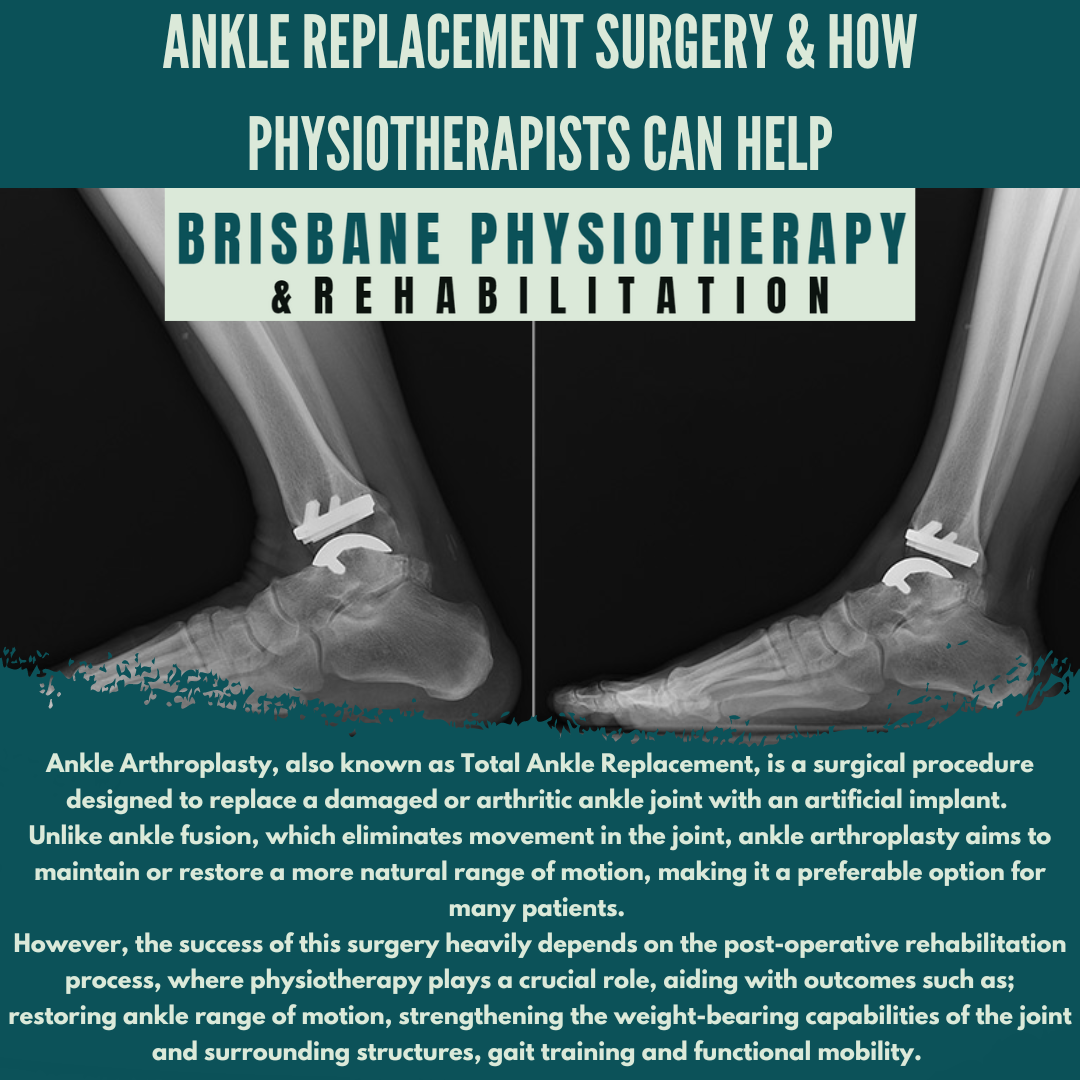Ankle Replacement surgery ( Ankle Arthroplasty )
Understanding Ankle Arthroplasty and Physiotherapy Treatment
Ankle arthroplasty, also known as total ankle replacement, is a surgical procedure designed to replace a damaged or arthritic ankle joint with an artificial implant. This surgery is often recommended for individuals suffering from severe ankle arthritis, where other treatments have failed to relieve pain or restore function. Unlike ankle fusion, which eliminates movement in the joint, ankle arthroplasty aims to maintain or restore a more natural range of motion, making it a preferable option for many patients. However, the success of this surgery heavily depends on the post-operative rehabilitation process, where physiotherapy plays a crucial role.
Post-Surgical Goals and Physiotherapy Approach
The primary goal following ankle arthroplasty is to regain mobility, strength, and function while ensuring the longevity of the implant. A physiotherapist will tailor a rehabilitation program to address these goals, focusing on reducing pain and swelling, improving range of motion, and strengthening the surrounding muscles.
Initial Rehabilitation Phase
In the first few weeks after surgery, the physiotherapist's main focus is on managing pain and swelling. Ice, elevation, and gentle massage techniques are often employed to alleviate discomfort and promote healing. During this phase, the ankle is typically immobilised in a cast or boot to protect the surgical site. However, gentle exercises, such as toe wiggles and knee bends, may be introduced to maintain circulation and prevent stiffness in the surrounding joints.
Restoring Range of Motion
Once the initial healing phase has passed, the physiotherapist will begin working on restoring range of motion in the ankle. This is crucial for preventing scar tissue formation and ensuring the new joint moves smoothly. Passive range-of-motion exercises, where the physiotherapist gently moves the ankle for the patient, are typically introduced first. As the patient progresses, active range-of-motion exercises, where the patient moves the ankle independently, are added to the rehabilitation program.
Strengthening and Weight-Bearing Exercises
Strengthening exercises are gradually introduced to rebuild the muscles surrounding the ankle, providing support and stability to the joint. The physiotherapist will guide the patient in performing exercises that target the calf, shin, and foot muscles. Weight-bearing activities are also gradually reintroduced, often beginning with partial weight-bearing using crutches or a walker, and progressing to full weight-bearing as tolerated.
Gait Training and Balance Exercises
Gait training is a critical component of post-operative rehabilitation. The physiotherapist will work with the patient to correct any abnormalities in their walking pattern that may have developed due to pain or limited mobility before surgery. Balance and proprioception exercises are also incorporated to enhance the patient’s ability to navigate uneven surfaces and prevent falls.
Long-Term Management
Long-term physiotherapy may be necessary to ensure the continued success of the ankle replacement. The physiotherapist will educate the patient on maintaining joint health and recommend low-impact activities, such as swimming or cycling, to keep the joint functioning well without excessive strain.
In conclusion, ankle arthroplasty can significantly improve the quality of life for individuals suffering from severe ankle arthritis, and the role of physiotherapy in post-operative care is essential for achieving the best possible outcomes.
